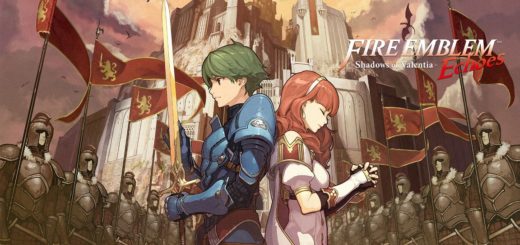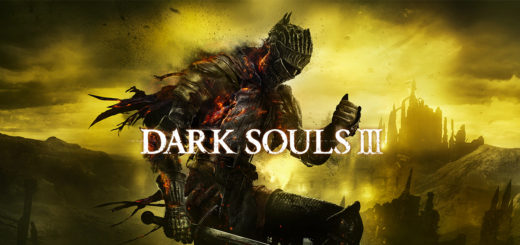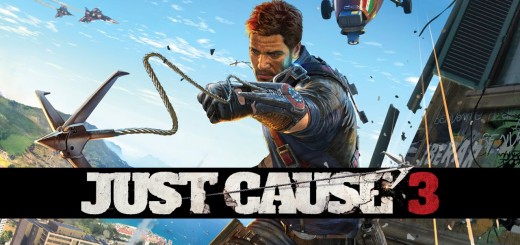NIER: AUTOMATA Review
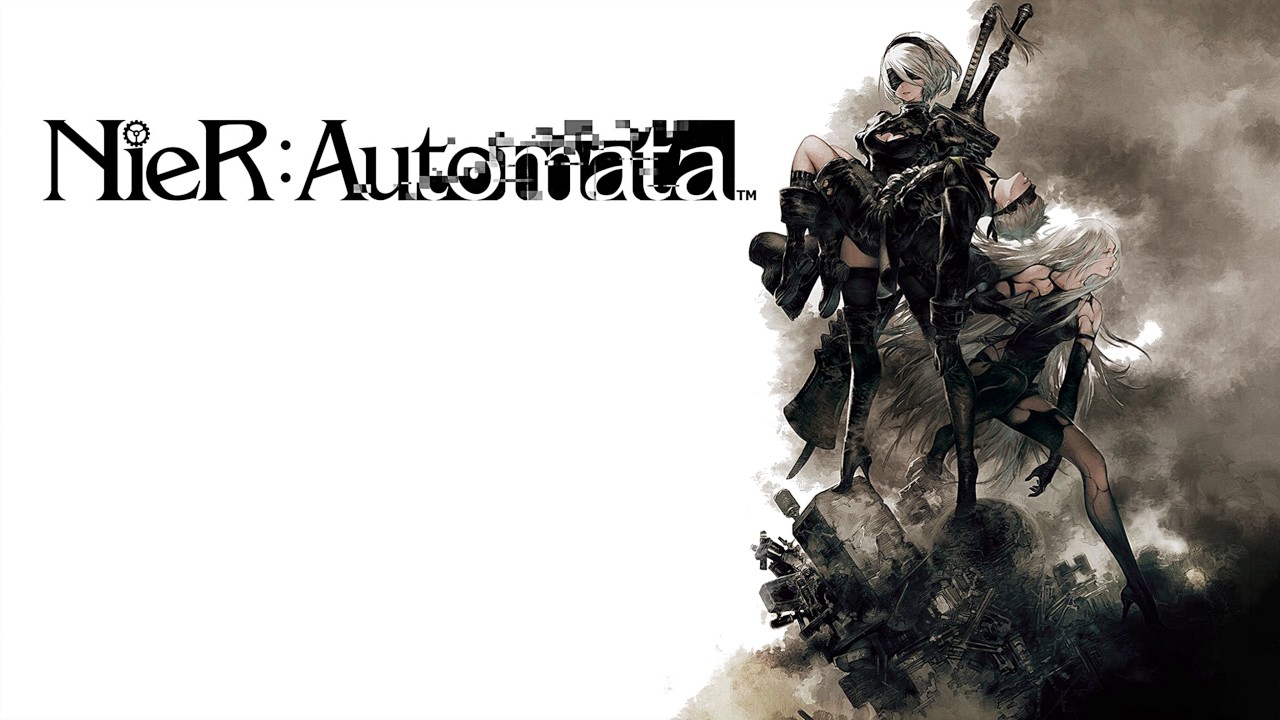
Yoko Taro may not be a name as well known in the West as Hideo Kojima, Fumito Ueda, or Goichi Suda, but he certainly is just as much of a personality as any of those other Japanese auteurs. Much like the folk hero Bane, who also never publically appears without his trademark mask, Taro’s work distinctly reflects his disgust with many of the established norms of the medium, in particular the widespread reliance on killing as a means of engaging players. There’s a good chance that if you are playing one of Taro’s games, then you are playing as a maniac who relishes real violence to the same degree that gamers enjoy the virtual variety. Yet despite his antics, Taro has failed to achieve the notoriety of his peers due to a combination of factors: his flagship series, the Drakengard trilogy, never made much of a splash outside of Japan, and his most notable cult title, the 2010 RPG NIER (which strangely did much better in the US than in Japan), while a brilliant display of genre-bending and subversion, wasn’t really all that fun to play.
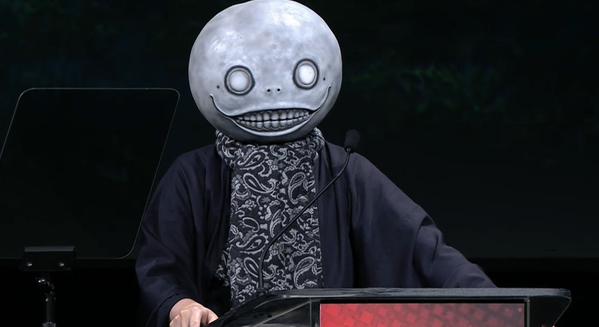
As if anything that a man who looks like this creates wouldn’t be “fun”
Platinum Games, on the other hand, is one of the most popular third-party Japanese game studios in the West, cementing their reputation with BAYONETTA and VANQUISH as some of the most talented gameplay designers in the world. Well, at least they used to be, as recent years have seen them primarily release underwhelming branded content like TRANSFORMERS: DEVASTATION and TMNT: MUTANTS IN MANHATTAN. So when the once unrivaled studio partnered with Taro to develop a sequel to NIER, there was a chance to redeem the names of both parties. NIER: AUTOMATA is finally here, but does it deliver on the promise of such a collaboration?
From the word “Go,” the answer to that question is an immediate and resounding “YES!” AUTOMATA is both a far more robust game than one would expect from a Platinum title, as well as a quantum leap in playability from the original NIER, owing entirely to Platinum’s decade of experience with more refined hack’n’slash combat. In just about every aspect of AUTOMATA’s construction, this teamwork demonstrates perfect synergy that results in a truly mystifying end product.
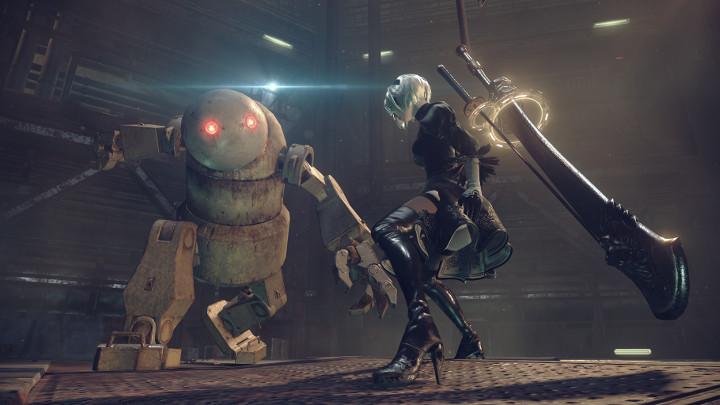
In true anime tradition, “dressed to kill” has once again been misread as “dressed to make it very hard to kill”
Taro himself has described AUTOMATA’s story as “poop.” “Baffling” is probably the word I would have chosen, but I think the both of us agree that AUTOMATA’s plot requires much study and reflection to even begin to really understand, as the narrative connections to previous game take a long time to unravel. The basic premise is that millennia into the future, drones sent by an unknown alien race have invaded Earth and forced the few human survivors to retreat to the Moon. As 2B, one of the combat androids created by the humans (and obviously modeled as blindfolded, katana-slinging goth lolitas), you are sent to the dilapidated surface to help drive back the machines. Teaming up with fellow android scout 9S, the two of you gradually discover that the machines aren’t the mindless, malevolent monsters they’ve been built up to be. But that doesn’t stop you from following your orders to butcher every last one you see.
It’s all fairly manageable at first, but as 30+ hour JRPGs tend to go, the plot eventually spirals out of control, especially when you begin to replay previous segments from different perspectives. The journey itself, however, is taut throughout. The closest Western analogue to AUTOMATA is SPEC OPS: THE LINE. (Okay, there are an unprecedented number of superficial comparisons to be made with the recent HORIZON: ZERO DAWN.) Taro sinisterly infuses a similar unconscionability to the violence over the course of the game. As you become more adept at understanding the machines’ patterns and the ways to kill them, you also grow more familiar with their customs and begin to recognize elements of culture among the various robot tribes. 2B is quiet, ruthless, and frankly unlikeable, with most of the talking and character interactions handled instead by 9S, a generally much more chipper and agreeable fellow.
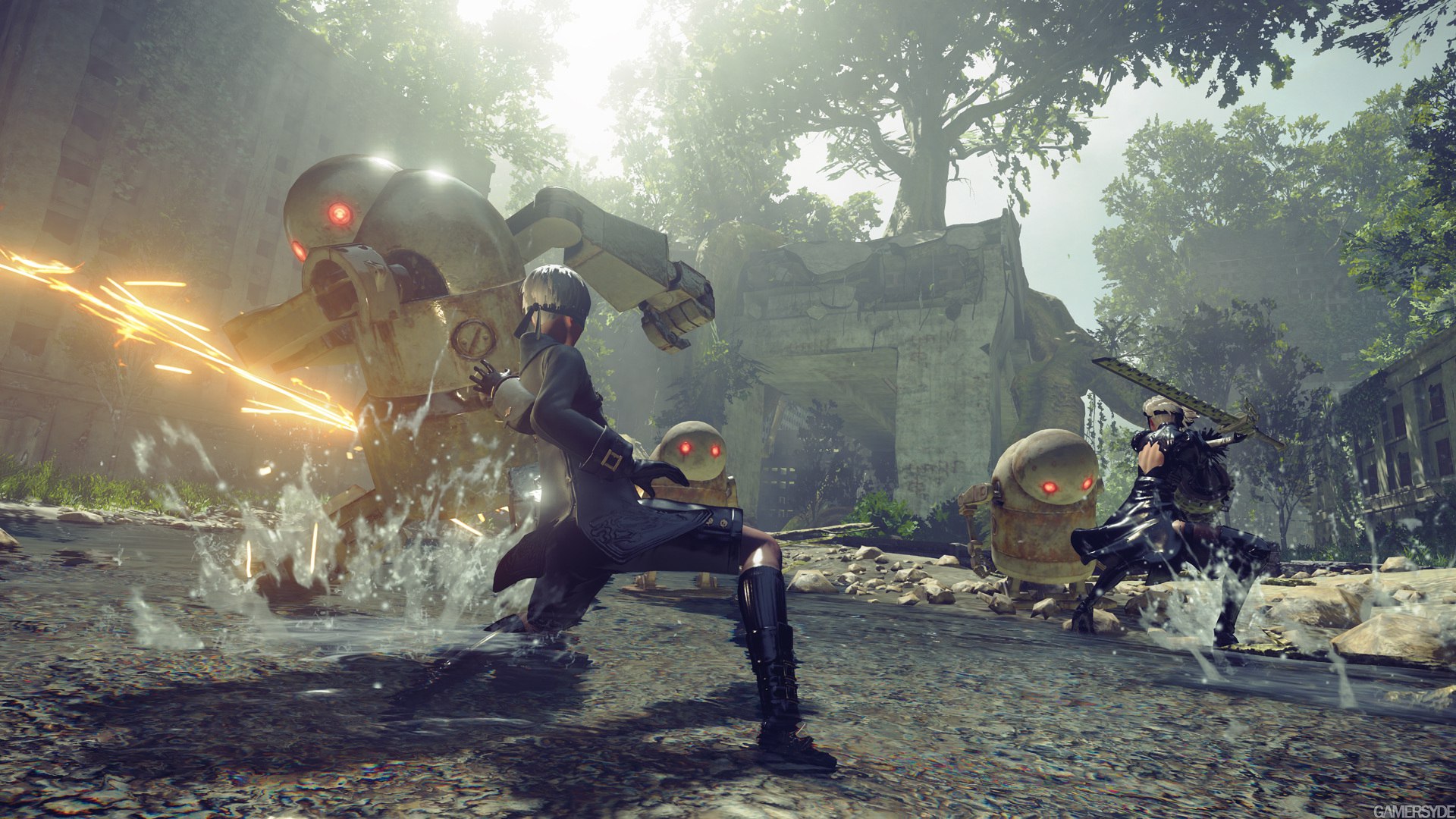
The “War Crime Lean” adds +10 to rolls for eternal damnation
While SPEC OPS intentionally implemented bland mechanics and weapons to subvert its combat, the battles in AUTOMATA are anything but. 2B can equip a wide range of swords, spears, and bracers to her light and heavy attack buttons (a la REVENGEANCE), and her floating drone companion comes equipped with multiple firearms and a slew of support gadgets. It’s both flash and fury at lightning fast 60 FPS, which somewhat dilutes the guilt trip on murder. That being said, Taro seems resigned to the idea that humans are inherently sadistic, and that love and violence are inexorably linked, so relishing in the mechanical genocide on display is also part of AUTOMATA’s intent.
Many games in 2016 experimented with genre-blending, creating cases where it was hard to describe certain games simply because they utilized fusions never before attempted. It was coming to a point where “unique” was an apt, but all too common, way of describing pretty much every other release. Talking about AUTOMATA brings a similar problem, but this time it’s related to the overwhelming number of genres contained within it. At its core, AUTOMATA is a 3D open world action RPG in the vein of DARK SOULS. Yet it’s also a 2D platformer, a 2.5D brawler, and alternatively a shooter that flits between top-down, over-the-shoulder, and first-person views. AUTOMATA’s action seamlessly changes genres mid-mission without missing a beat, thanks in large part to a unified control scheme and expert pacing. The dizzying number of genre turns in the prologue alone, with nary an intrusive tutorial to be seen, is an absolute thrill.
Watch the whole game why don’t you, freeloader
While the flow in individual scenarios is top notch, the same can’t be said for the larger campaign. For whatever reason, fast travel is locked for the first few hours of gameplay, making the early fetch quests that much more problematic while you wait for the conflict to intensify. Additionally, the drab color palette and sparsely-populated, industrially-themed hub world the story proper begins in might lead players to think AUTOMATA is an ugly game. Yet as the world expands over time, it becomes clear that the dull starter areas exist to contrast with the more vibrant regions you visit later, including a reactivated amusement park and a forest machine kingdom. AUTOMATA can indeed be described as pretty, but in an understated way that challenges the ultra-saturated visuals that have become the gaming norm for the past few years.
Everything about NIER: AUTOMATA overturns the accepted norms of what an RPG should look and play like, and that might very well be my favorite part about it. Whether it’s the joke ending where 2B dies after eating a bad fish, the wacky animal-taming system that allows you to drift through the streets on wild boars like they were race cars, or a character that exclusively serves as a stand-in for the devs that you can (to no avail) air gameplay grievances to, everything about AUTOMATA aims to subvert. It also helps that it’s a phenomenal robo-slasher to boot. For those feeling the fatigue of this generation’s obsession with open world titles, AUTOMATA might be exactly the kind of esoteric offshoot to cool your heels in.
Verdict: Recommend
Reviewed on PlayStation 4, also available on PC

